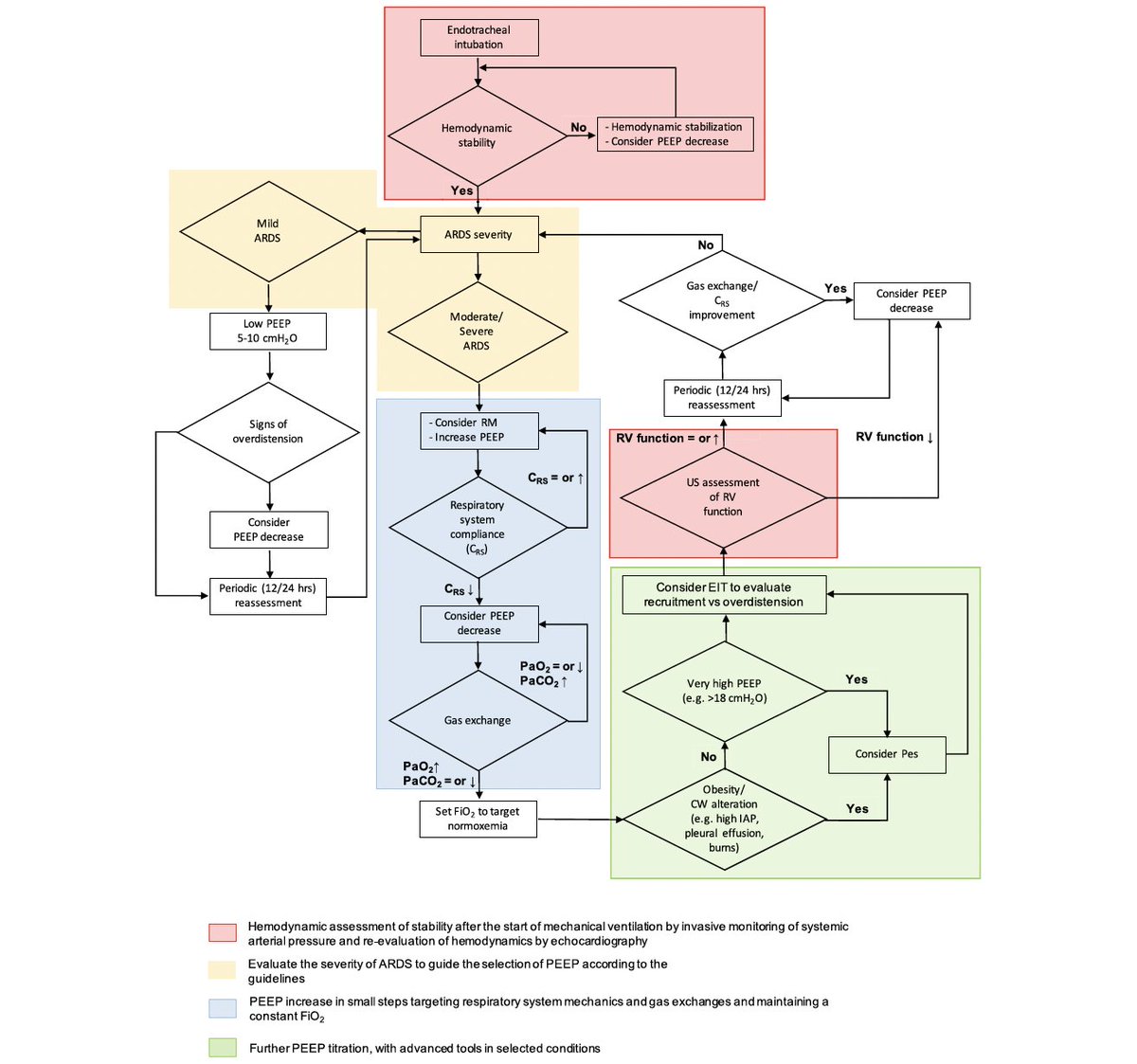
Next is Giancamo Bellani, talking on 'Relationships between oxygenations indices & patient outcomes'
#CCSSA2022 #critcare #FOAMcc
#CCSSA2022 #critcare #FOAMcc
Several indices have been proposed as bedside 'markers' for the development of VILI. They are relevant as they allow us to prognosticate patients, and therefore to determine the need for a higher level of intervention (e.g. ECMO).
#CCSSA2022
#CCSSA2022
PF ratio remains a very robust predictor of mortality, and is the crux for the diagnosis of ARDS.
#CCSSA2022
#CCSSA2022
Often PaCO2 is forgotten, but it is also extremely useful as, if minute ventilation is kept constant, changes in PaCO2 reflect changes in dead space (and recruitment overdistension)
doi.org/10.1007/s00134…
doi.org/10.1007/s00134…
There are two 'new' indicators of VILI
- Driving Pressure (see Amato's work)
doi.org/10.1056/NEJMsa…
- Mechanical Power (see Gattinoni's work)
doi.org/10.1007/s00134…
Two crucial papers for any modern intensivist!
#CCSSA2022
- Driving Pressure (see Amato's work)
doi.org/10.1056/NEJMsa…
- Mechanical Power (see Gattinoni's work)
doi.org/10.1007/s00134…
Two crucial papers for any modern intensivist!
#CCSSA2022
A useful review/suggestion of how to setup PEEP with an algorithm, published by the presenter and his fellow in 2019 - doi.org/10.1186/s13054…
#CCSSA2022
#CCSSA2022

• • •
Missing some Tweet in this thread? You can try to
force a refresh





